Tennessee gardeners, rejoice! You don’t have to pamper fussy flowers to enjoy a vibrant landscape.
These 18 Volunteer-State perennials shrug off heat, humidity, brief droughts, and even a bit of neglect.
From the misty Appalachian slopes in the east to the fertile Mississippi floodplain in the west, you’ll find something here that thrives in your corner of Tennessee.
Meet the toughest, most beautiful plants that keep coming back year after year… no babysitting required.
1. Black-eyed Susan (Rudbeckia hirta)
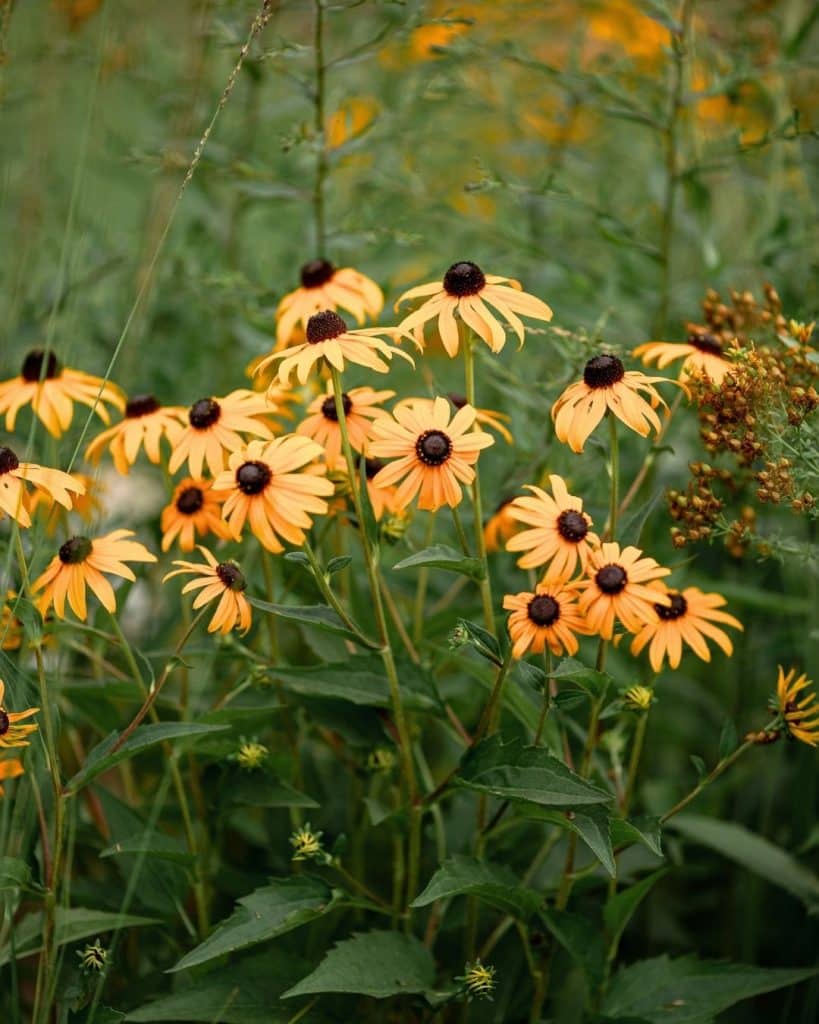
- Native statewide, it thrives in full sun and poor soil.
- Cheerful yellow petals bloom from June through September.
- Self-seeds lightly for effortless repeat color.
The Black-eyed Susan is the ultimate set-it-and-forget-it wildflower. Once the taproot settles, it laughs at drought and clay, painting roadsides, meadows, and gardens gold all summer.
Trim spent blooms if you want tidier clumps, or let the seed heads feed Goldfinches.
2. Purple Coneflower (Echinacea purpurea)
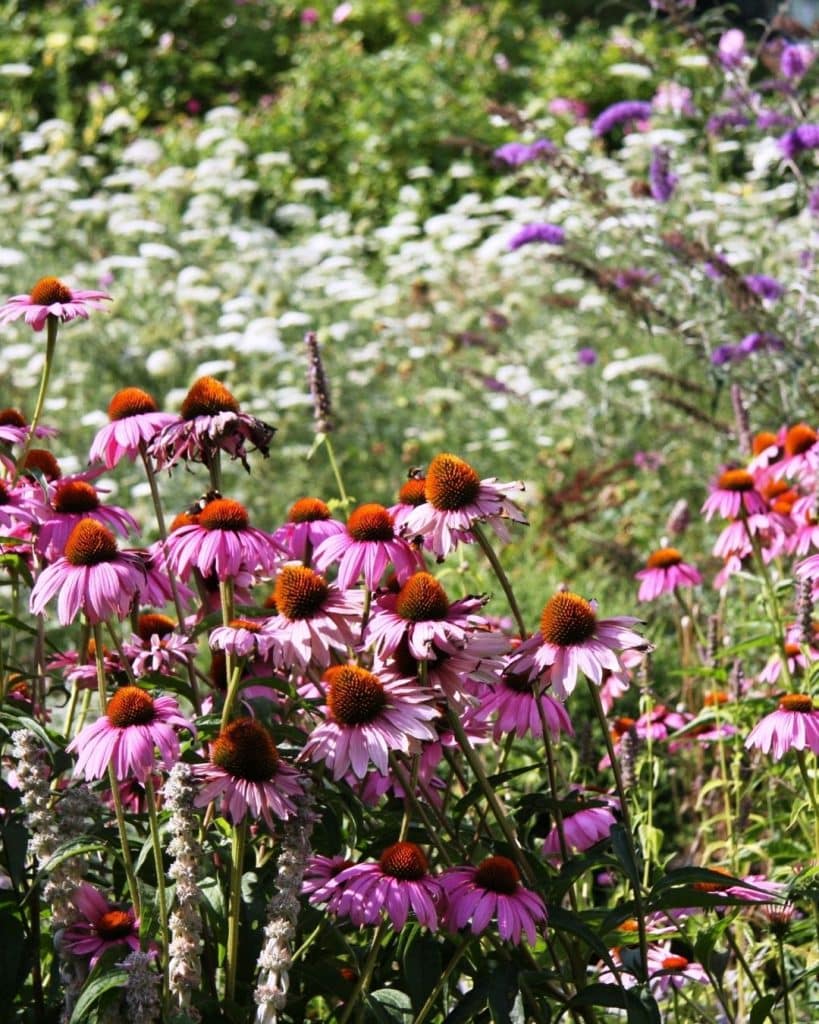
- Performs from Memphis to the Smokies.
- Pink-purple petals and bronze cones draw pollinators.
- Deer-resistant and drought-tolerant once rooted.
Give coneflowers six hours of sun and ordinary, well-drained ground… then stand back.
Hummingbirds sip nectar, songbirds feast on winter seeds, and the upright seed heads add texture after frost.
Divide every few years if clumps crowd.
3. Tennessee Coneflower (Echinacea tennesseensis)
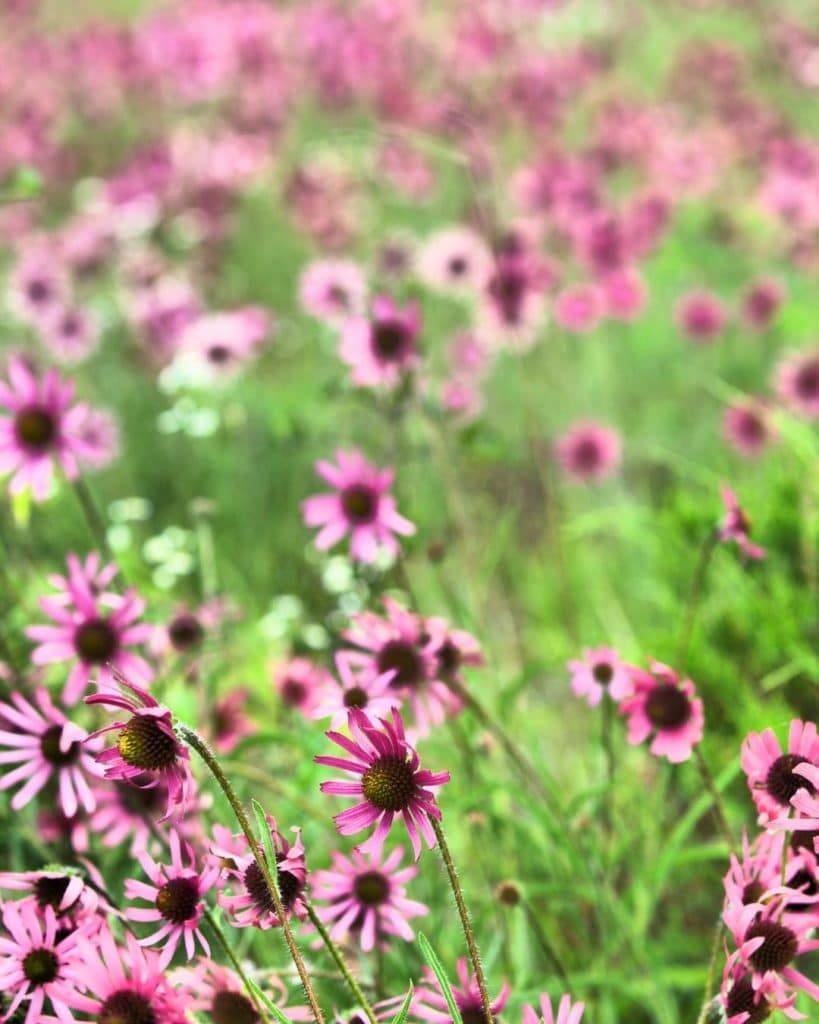
- Endemic to Middle Tennessee cedar glades.
- Up-turned pink petals face the morning sun.
- Thrives in thin, rocky soil and full heat.
This once-endangered native loves the very spots other flowers hate—hot, shallow limestone soils.
It asks only for sunshine and lean drainage, rewarding you with elegant blooms from late spring into midsummer.
Protect its genetics by planting away from other Echinacea.
4. Coral Honeysuckle (Lonicera sempervirens)
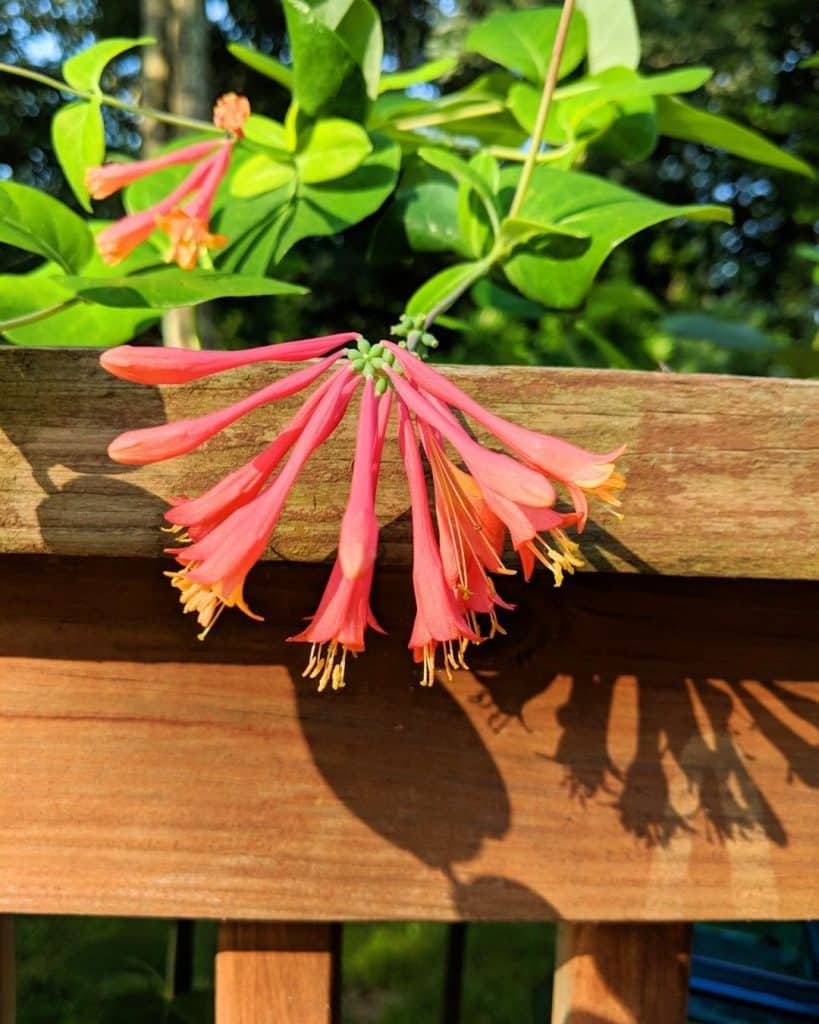
- Native vine that looks great on fences and mailboxes statewide.
- Equipped with trumpet-red flowers that keep hummingbirds happy.
- Non-invasive and drought-tough once established.
Skip the weedy Japanese honeysuckle and plant this polite cousin instead.
It blooms from April through frost, tolerates light shade, and tolerates heavy Tennessee clay far better than you’d expect.
Just give new vines a sturdy trellis and a deep drink during their first summer.
5. Butterfly Weed (Asclepias tuberosa)
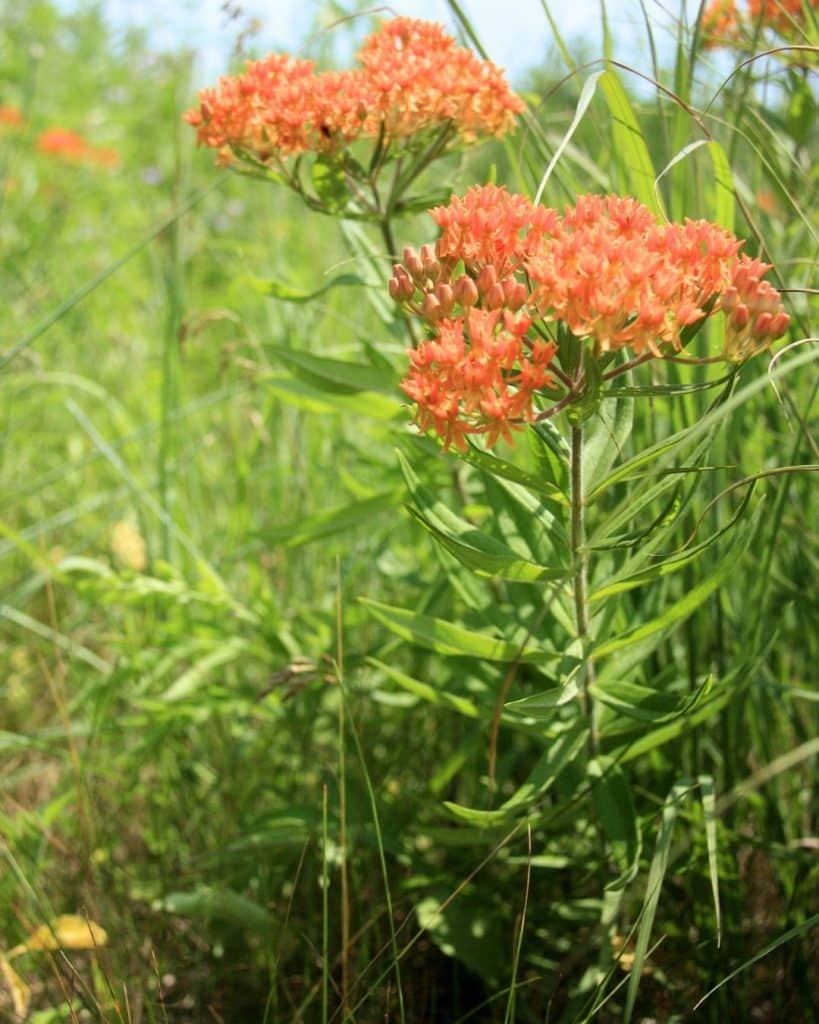
- A Monarch host that loves dry hillsides.
- It produces fiery orange umbels in early summer.
- Deep taproot means zero watering after year one.
Butterfly weed needs patience, roots first, flowers second. But once settled it ignores drought and rewards you with bright blooms that entice Monarchs, Swallowtails, and native bees.
Avoid fertilizer; lean soil keeps stems sturdy.
6. ‘Autumn Joy’ Sedum (Hylotelephium telephium)
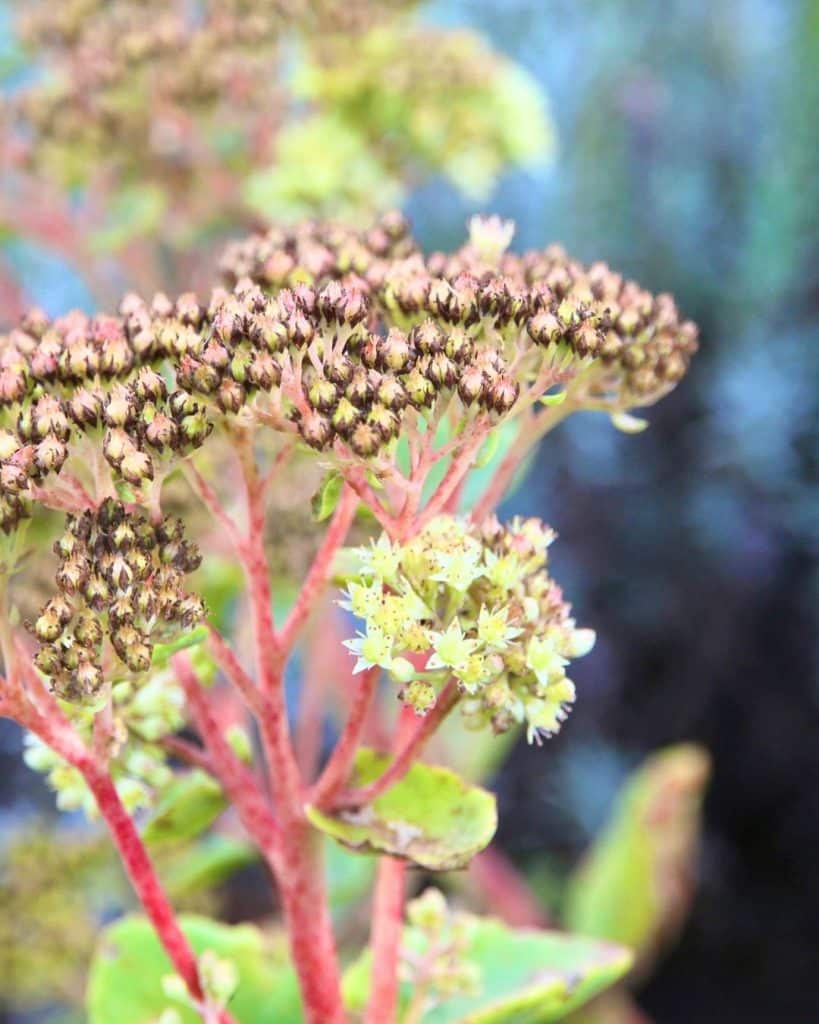
- Stonecrop that thrives from the Plateau to West TN.
- Succulent foliage turns bronze under stress.
- Pink buds age to rusty red—perfect fall color.
No plant handles reflected heat from driveways or brick walls quite like ‘Autumn Joy’.
Bees crowd its late-season flower heads, and the dried seed clusters stand tall all winter.
Cut back in early spring for fresh growth.
7. Switchgrass (Panicum virgatum)
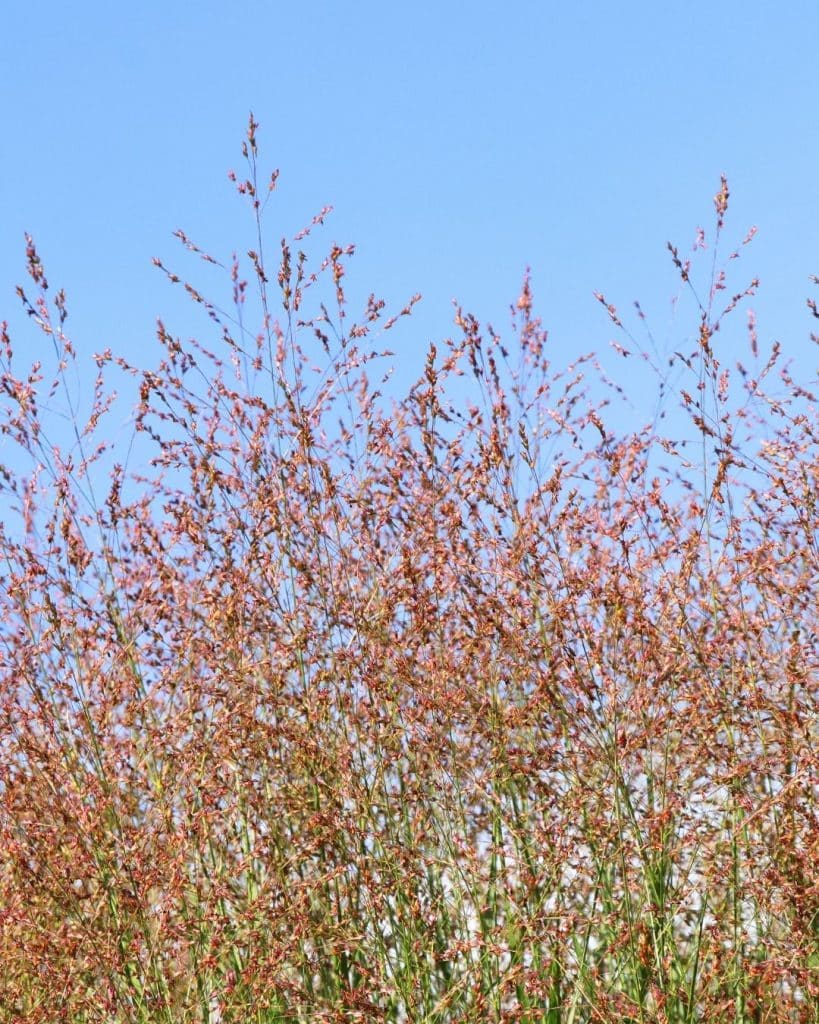
- This native prairie grass handles soggy springs and dry midsummer.
- Airy seed plumes feed songbirds.
- Forms upright clumps that never flop.
Choose cultivars like ‘Shenandoah’ for red-tinted blades or ‘Heavy Metal’ for steely blue foliage.
Switchgrass tolerates clay, salt, and poor fertility, making it a no-brainer for low-maintenance screens and rain-garden backdrops.
8. Blue False Indigo (Baptisia australis)
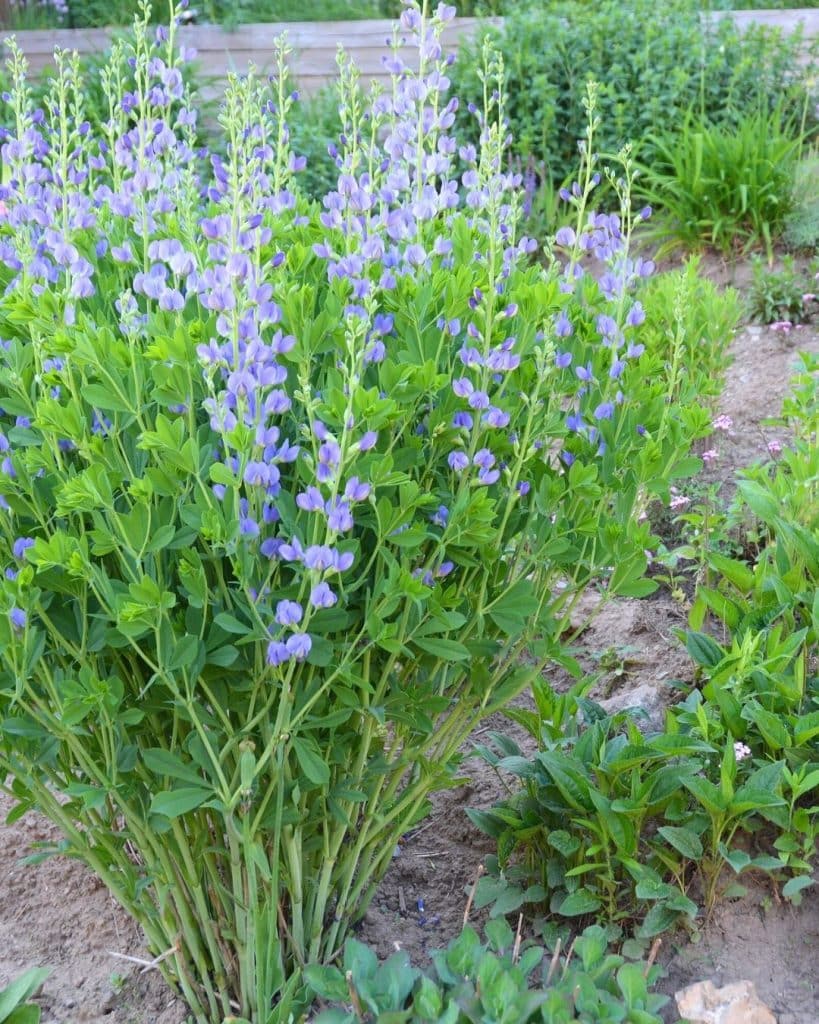
- Gorgeous in Middle and East TN cottage borders.
- Spires of indigo-blue flowers in May.
- Deep roots = extreme drought tolerance.
Baptisia forms a shrub-like clump that never needs staking, never needs division, and rarely meets a pest.
After bloom, the charcoal-black seed pods rattle in the summer breeze, nature’s own maracas.
9. Joe Pye Weed (Eutrochium purpureum)
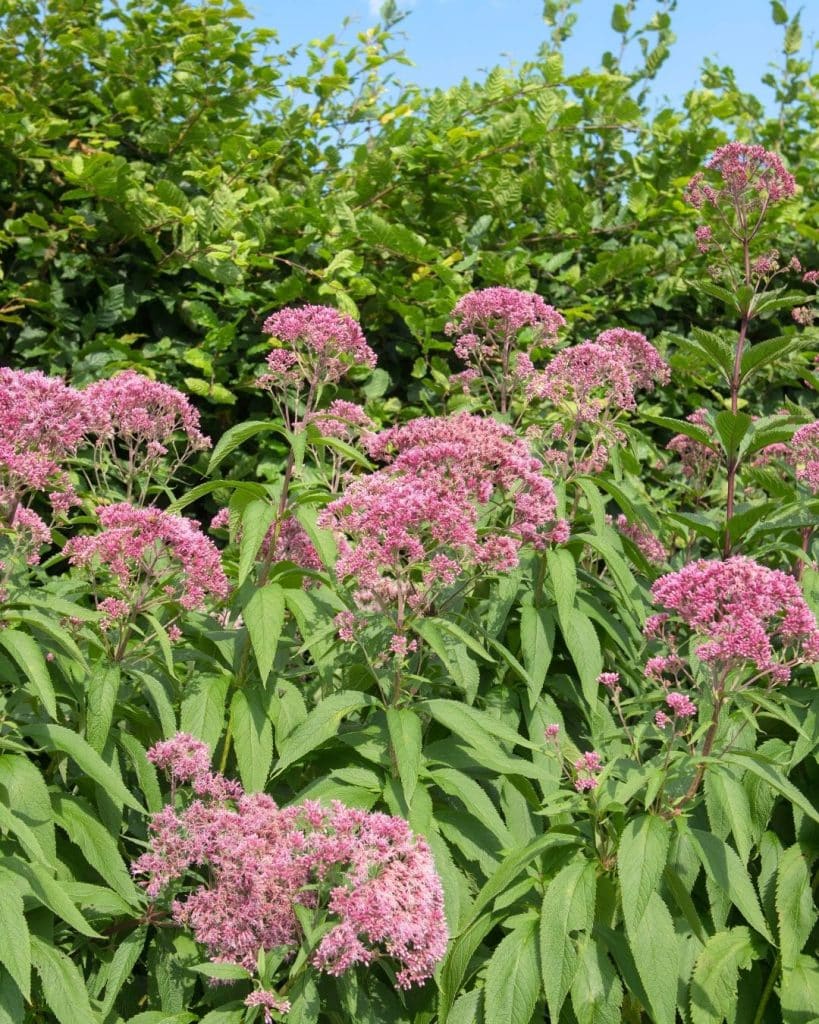
- Moist meadow native from Nashville eastward.
- Vanilla-scented mauve umbels reach 5-7 ft.
- Monarch magnet for late-summer nectar.
If you have a low spot or rain garden, plant Joe Pye Weed and watch butterflies swarm in August.
It tolerates brief drought once mature, but shines in consistent moisture. Cut stalks to the ground after frost to control their size.
10. Gulf Coast Muhly (Muhlenbergia capillaris)
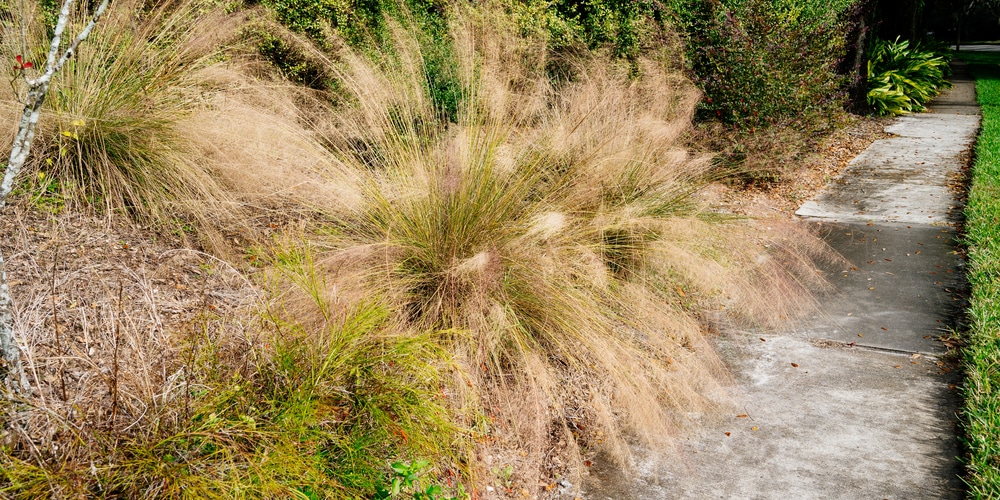
- Cotton-candy plumes in October.
- Tolerates drought, salt, and rocky clay.
- Great in West TN’s heat and Middle TN xeriscapes.
Few grasses stop traffic like pink muhly in full glory.
Scatter several in a sunny bed and you’ll get a shimmering, pink cloud each fall… no fertilizer or staking required.
11. Gaura (Gaura lindheimeri)
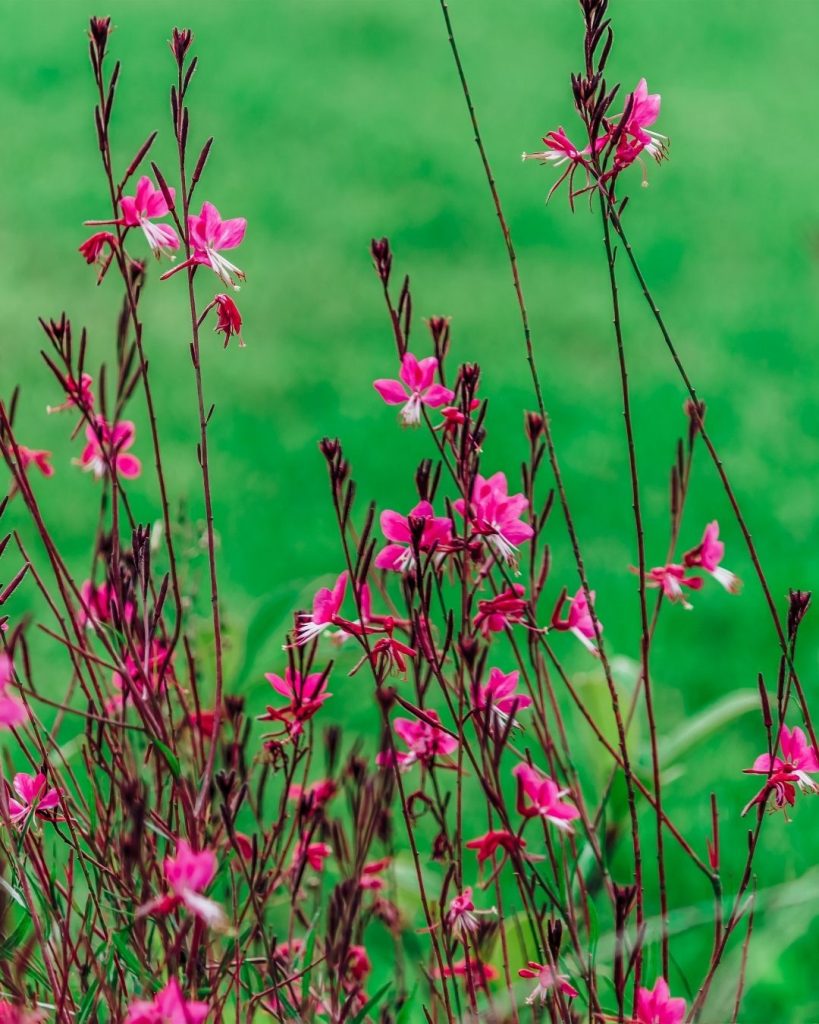
- Billowy wand-flower for any sunny Tennessee bed.
- White or pink blooms dance all season.
- Needs only sharp drainage—little else.
Gaura’s airy sprays add motion without weight. Cut it back by half in midsummer for a fresh flush of flowers. Otherwise, this prairie native is content in the poorest gravelly soils you can throw at it.
12. Daylily (Hemerocallis hybrids)
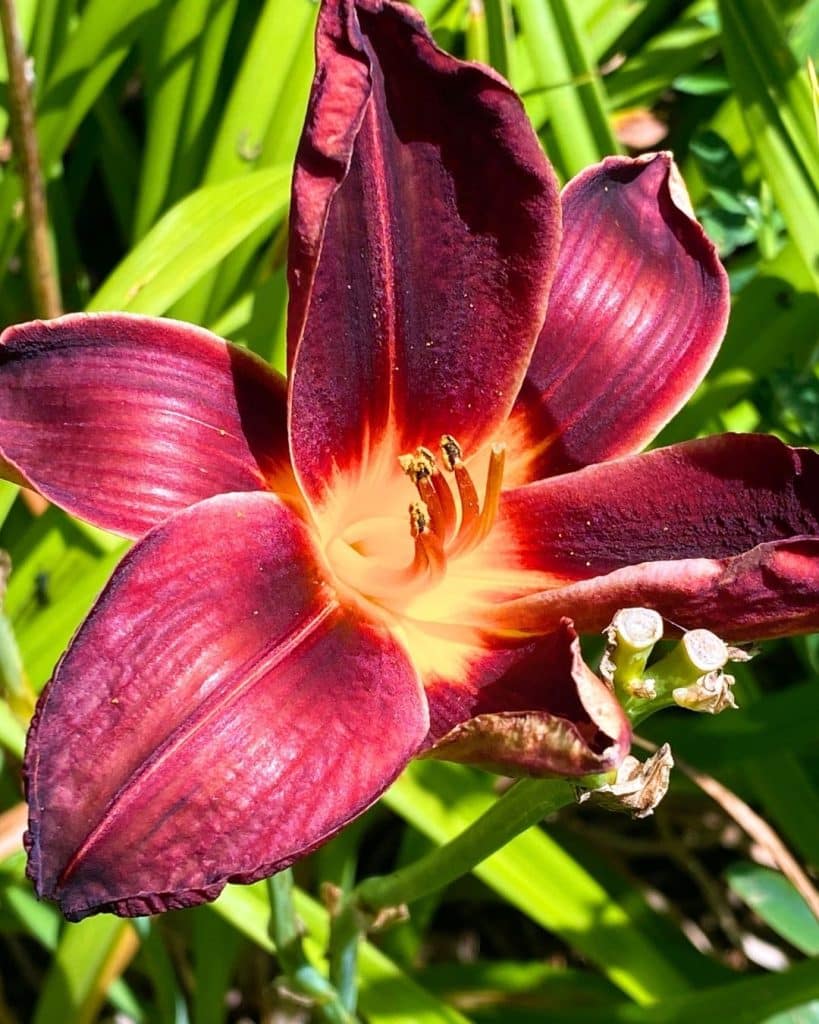
- Bulletproof in every Tennessee county.
- Thousands of colors; rebloomers extend the show.
- Tolerates drought, clay, and road salt.
“Plant once, divide when you feel like it” sums up daylily care.
Even neglected clumps bloom for decades. If you want tidy looks, or leave seed pods for winter interest.
13. Obedient Plant (Physostegia virginiana)
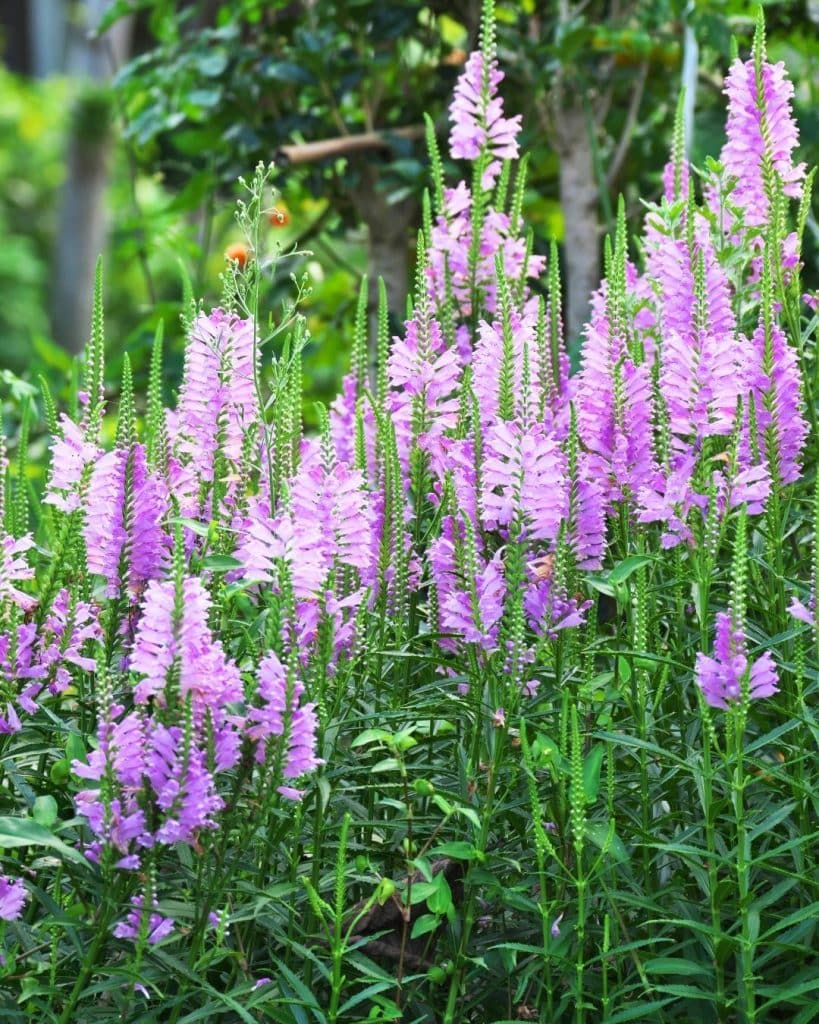
- Spike-blossoms in pink or white, July–September.
- Handles clay, occasional flooding, and blazing sun.
- Pollinators love its minty nectar tubes.
‘Miss Manners’ behaves politely in tight spaces, while old-fashioned strains romp through loose borders.
Either way, cut stems to the ground in winter and enjoy the fuss-free color next summer.
14. Oxeye Sunflower (Heliopsis helianthoides)
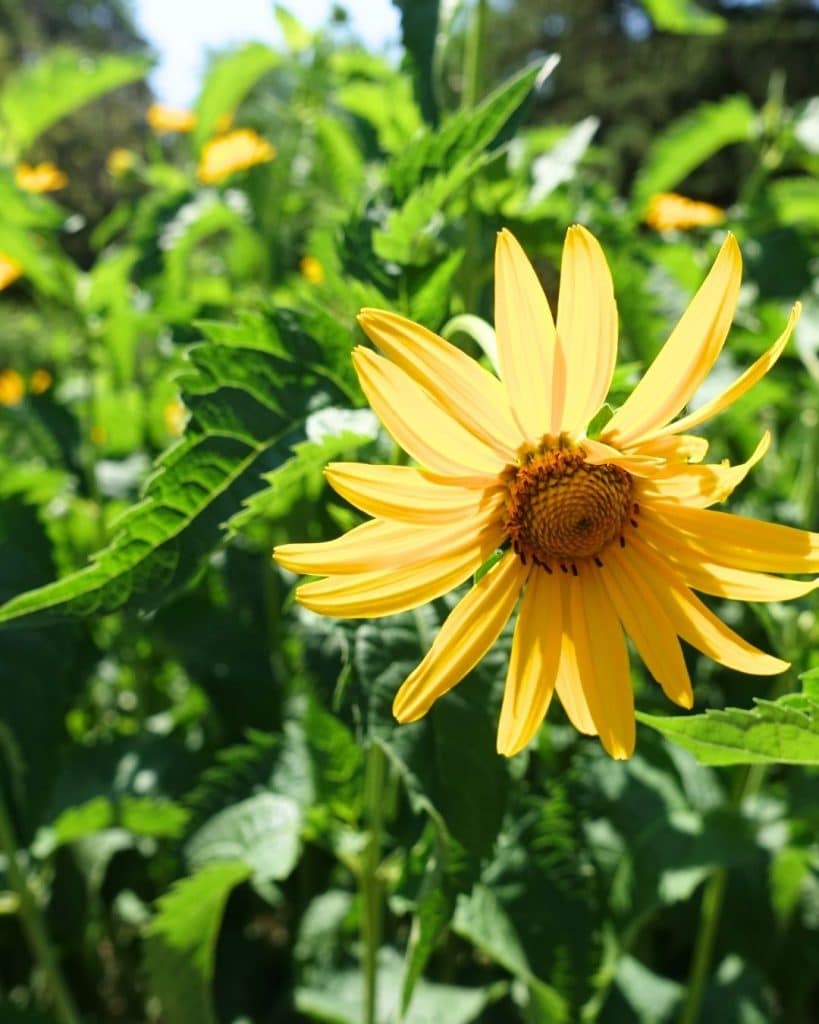
- Native prairie bloomer for full-sun beds.
- Tall stems topped with 3-inch golden daisies.
- Thrives in lean soils and attracts native bees.
Oxeye sunflower grows wherever you need cheerful height, behind a mailbox, along a fence, or in a meadow strip.
Give it one midseason Chelsea chop if you want shorter, bushier plants.
15. Scarlet Rose Mallow (Hibiscus coccineus)
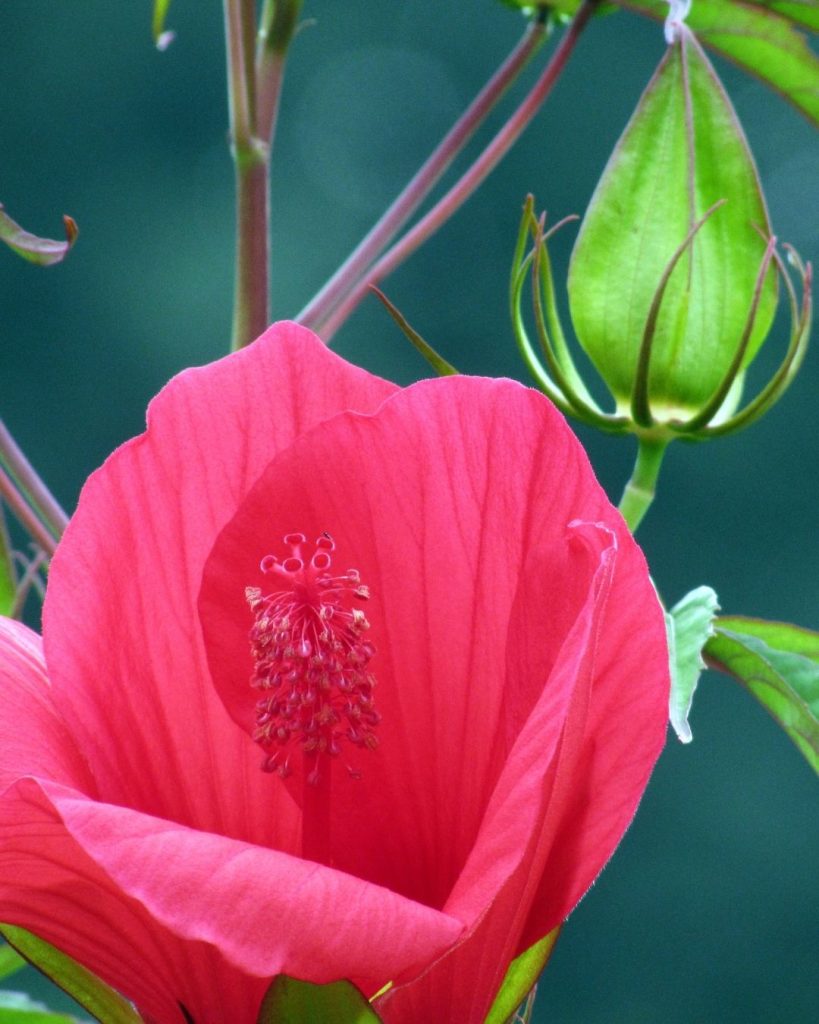
- Loves wet feet along ponds and ditches.
- Six-inch crimson stars July–October.
- Hardy statewide (Zones 6–9).
Plant this dramatic hibiscus where the hose or downspout overflows.
It laughs at summer swelter, dies back after frost, then rockets to six feet each May.
16. Arkansas Bluestar (Amsonia hubrichtii)
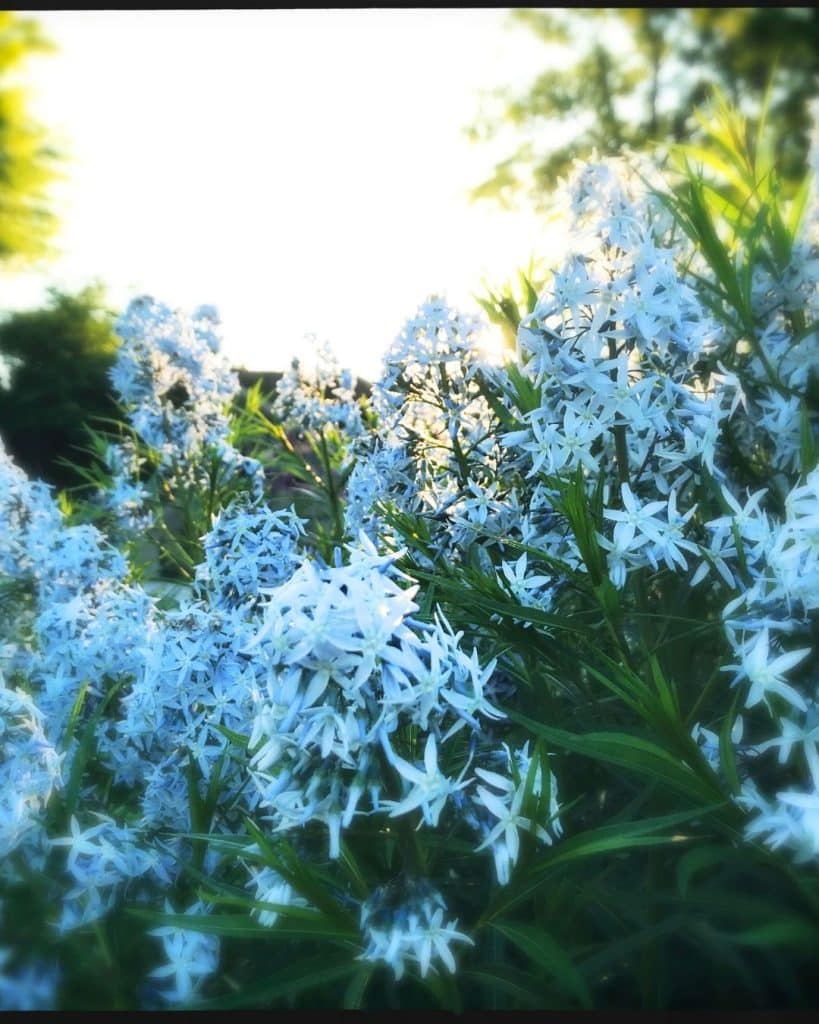
- Soft blue flowers in spring.
- Fine, threadleaf foliage turns blazing gold in fall.
- Grows in sun or partial shade with zero fuss.
Arkansas Bluestar shines for three seasons with almost no inputs.
Give it room to form a rounded, 3-foot clump, then let nature handle the rest.
17. Woodland Phlox (Phlox divaricata)
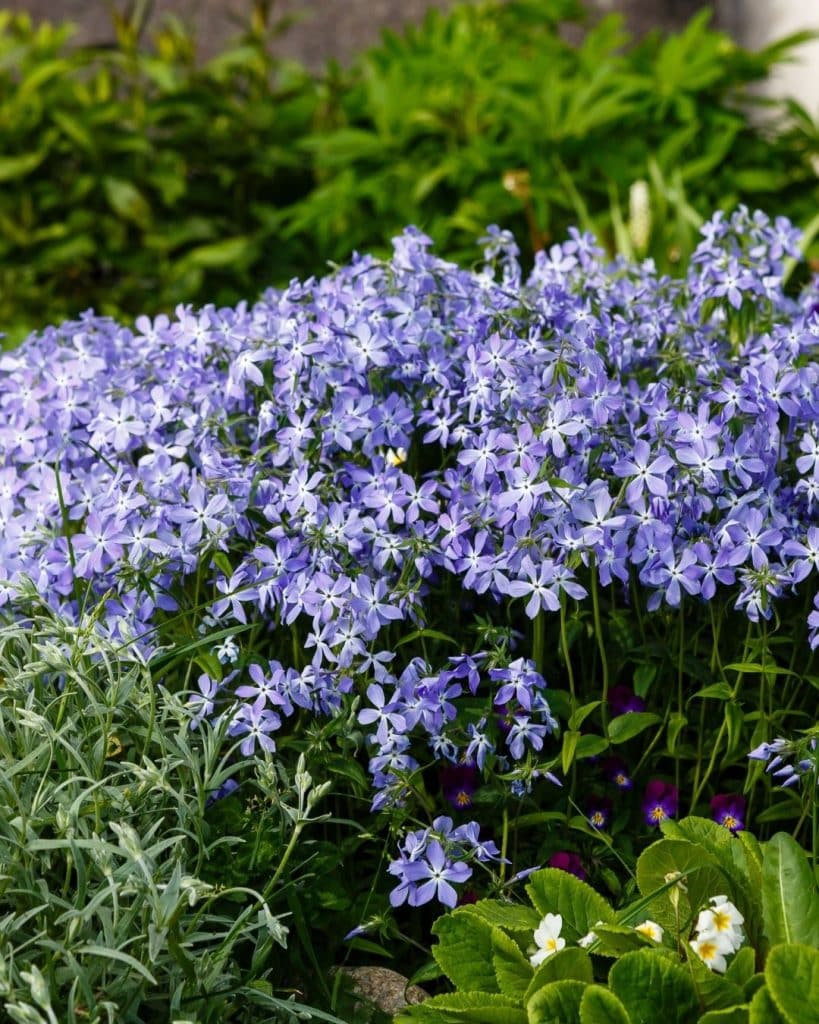
- Carpets shady spots with fragrant blue blooms in April.
- Native to rich forests across Tennessee.
- Handles drought once the roots spread.
This spring ephemeral knits together under deciduous trees, then politely recedes when summer perennials fill in.
Occasional division every five years keeps it vigorous.
18. Catmint (Nepeta racemosa)
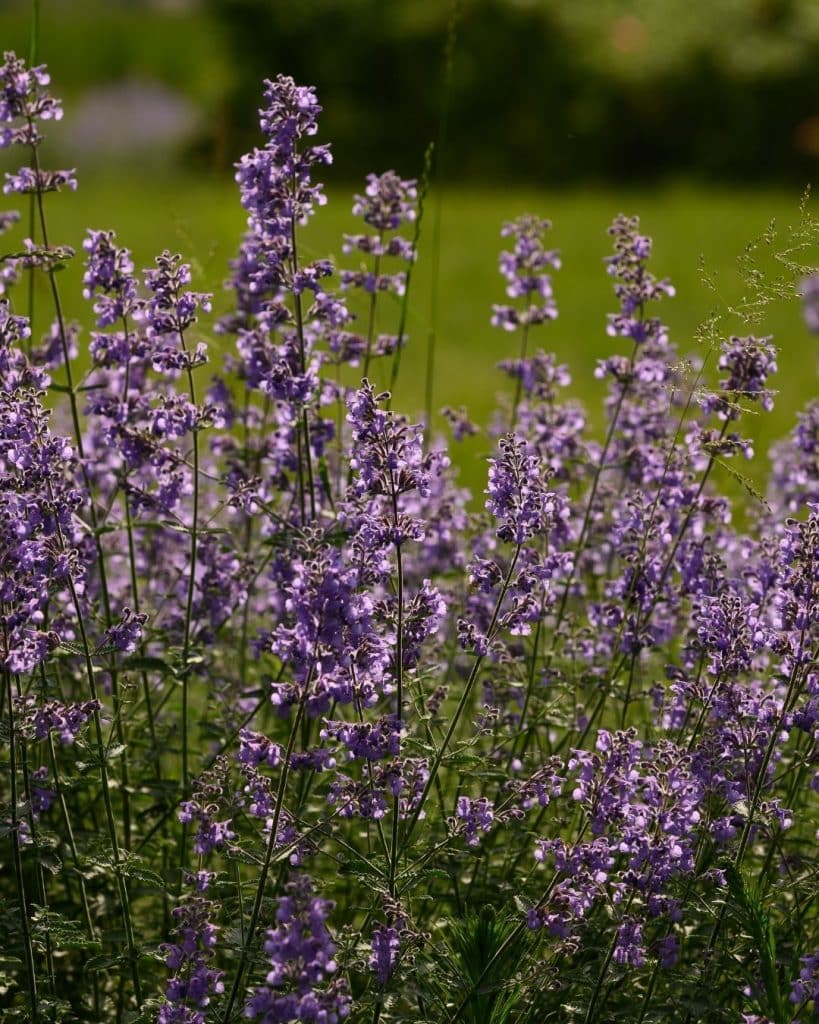
- Lavender-blue spires May–September.
- Cats, bees, and butterflies adore it.
- Shear once in midsummer for a second bloom flush.
Catmint thrives on hot, gravelly banks, edging beds with a soft haze of color.
‘Walker’s Low’ stays compact; taller strains weave nicely among roses. Deer and drought? No problem.
Thank you for stopping by! May every planting day in the Volunteer State be a home run!